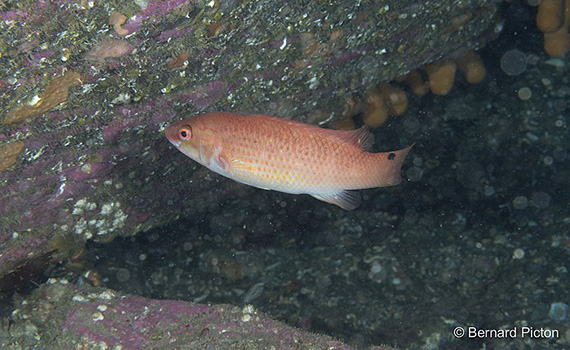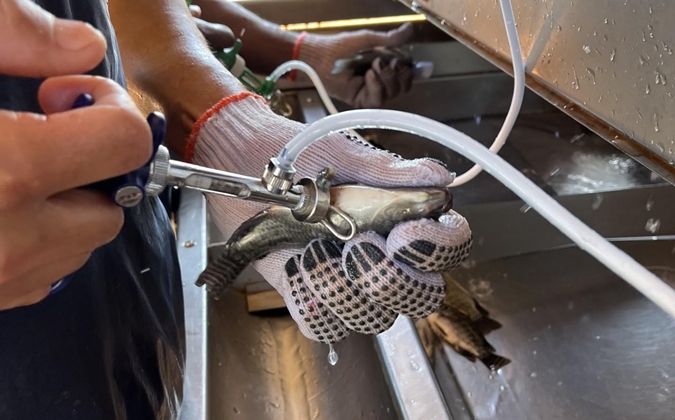
Cleaner-fish health risks highlighted as use in aquaculture rises
Cleaner fish have proved an effective alternative method of sea louse control — but their widespread introduction brings with it a new threat of pathogens and parasites, and available treatments are falling short of requirements, explained Norwegian researchers writing in Reviews in Aquaculture.
Looking at the cleaner fish used in Norway’s salmonid aquaculture — Atlantic lumpfish and a number of wrasse species — the researchers explained that demand for cleaner fish in Norway means they are often imported from other countries, meaning possible transfer of fish disease agents.
They highlighted that when 49 million cleaner fish were put to sea with salmon and rainbow trout in Norway in 2018, average cleaner-fish mortality was 40%, though the actual number could be much higher.
The health hazards of cleaner fish
Bacteria are the main health threat to cleaner fish, including Aeromonas salmonicida, Moritella viscosa and Vibrio spp., the researchers explained.
Not all bacterial pathogens can be transmitted to salmonids; some have a distinct relationship with cleaner fish, but for those with potential for transmission, commonly used vaccines can be used to protect farmed fish. However, in the case of species such as M. viscosa and Piscirickettsia salmonis, there is some transmission risk to be managed, they said.
They also noted viral conditions seen in cleaner fish and salmonids, including some that can cause high mortalities, such as viral haemorrhagic septicaemia. Virus transmission between cleaner fish and salmonids is not fully understood, the scientists explained, though the possibility of low-virulence strains mutating into highly virulent forms is a concern when importing cleaner fish.
The study also cites a number of parasites common to both cleaner fish and salmonids, including microsporidia and protists. The authors stressed that while most parasites are not damaging to their host unless under stressful conditions, some, such as Ichthyophonus hoferi, are known to cause high mortality. There is some fear that lumpfish may prove a means of transmission to salmon at sea.
An issue for fish and consumers
The possibility of opportunistic transfer of pathogens to humans is another potential cause for concern. The nematode Anisakis simplex, associated with human anisakiasis, is a particular worry, the authors said, given reported predation of cleaner fish by cohabited salmon. They also suggested that a number of parasites and some fungi of the Exophiala species complex may have zoonotic potential.
While cross-transmission to both salmonids and humans is a hazard in some cases, the authors stressed that a key consideration in improving the management of health risks posed to cleaner fish is the welfare of the fish themselves.
Few non-antibiotic options available
Antibiotics are often used to treat cleaner-fish health issues, they explained, though with a move toward reduced antibiotic use, there is a need for vaccination options. There is, however, a “remarkably low” number of vaccine trials being conducted in cleaner fish, they added.
“Cleaner fish are susceptible to a high range of different pathogens that may cause diseases and mortalities. The animal welfare of cleaner fish, with regard to immune prophylactic measures, must be taken care of by developing efficient vaccination strategies,” they explained.
“Vaccine development aiming to induce protection against well‐known pathogens is by far lagging behind the current situation of the main aquacultured species.”
Welfare concerns
Beyond the search for vaccines to combat pathogens, the researchers argued that there is much scope for improvement in understanding factors affecting the general well-being of cleaner fish in aquaculture systems.
“Despite the large numbers of cleaner fish used, there are large knowledge gaps concerning several factors affecting the lumpfish health and welfare under farmed conditions, such as possibility for expressing natural behavior, optimal morphological and physiological status, the impacts of stressful situations, injuries and environmental conditions, and dietary/feeding requirements.
“Combined with the potential negative effects from these different factors, in addition to those from diseases and parasites, the overall welfare of cleaner fish in sea cages has been considered poor for both lumpfish and wrasse,” they concluded.
To read the full article published in Reviews in Aquaculture, click here.
Feature photo credit: Bernard Picton
Posted on: October 25, 2020






